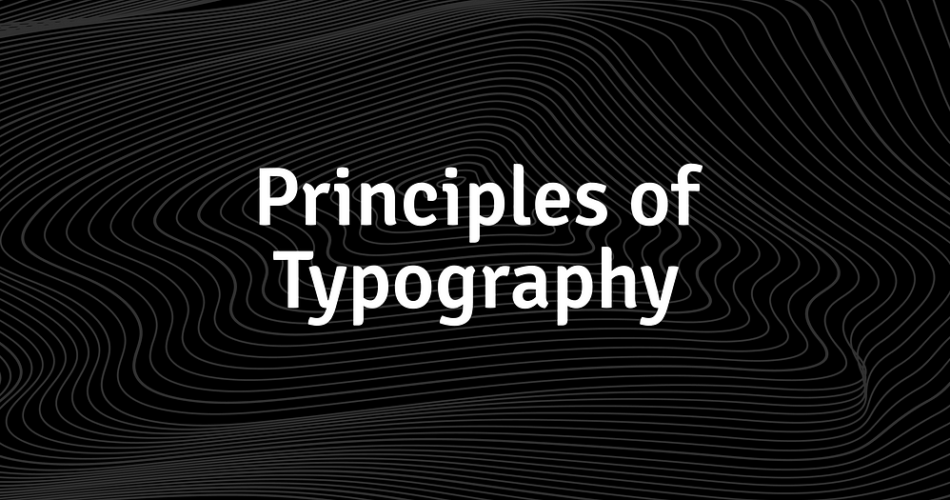Typography is far more than the mere arrangement of letters on a page. It is an artful blend of creativity and precision that has the power to enhance communication, evoke emotions, and create meaningful visual experiences. To achieve effective typography, designers adhere to a set of fundamental principles that guide the arrangement, selection, and presentation of typefaces.
- Readability and Legibility: The primary purpose of typography is to convey information. Therefore, readability and legibility are paramount. Selecting typefaces that are clear and easy to read ensures that the message is transmitted effortlessly to the audience. Adequate spacing between letters, words, and lines also contributes to a pleasant reading experience.
- Hierarchy: Typography helps establish a visual hierarchy within content. By varying font sizes, weights, and styles, designers can guide the reader’s attention to essential elements. Headings, subheadings, and body text each play a role in defining the information’s importance.
- Contrast: Contrast in typography involves creating distinction between various elements. This can be achieved through variations in size, weight, color, and style. Contrast adds visual interest and aids in differentiating headings from body text, thus improving overall readability.
- Alignment: Proper alignment ensures a clean and organized appearance. Text can be aligned to the left, right, center, or justified. Consistency in alignment across different elements maintains a sense of order throughout the design.
- Consistency: Consistency in typography unifies a design and creates a sense of cohesiveness. Choosing a limited number of typefaces and using them consistently throughout a project maintains a professional appearance.
- Proximity: Proximity refers to the placement of related elements close to one another. Grouping related content enhances the viewer’s understanding of relationships and makes information easier to digest.
- Space: White space, or negative space, is a crucial design element. It provides visual breathing room, reduces clutter, and improves readability. Effective use of space directs the viewer’s attention and prevents visual overload.
- Typeface Selection: Choosing the right typefaces is a critical decision. Different typefaces convey different moods and aesthetics. A typeface’s personality should align with the intended message and audience.
- Visual Harmony: Typography seeks to achieve a harmonious balance between elements. This balance ensures that no single typographic choice overpowers the overall design, creating an appealing and well-composed layout.
- Emotional Impact: Typography is more than just words; it can evoke emotions. A carefully chosen typeface can convey feelings of elegance, playfulness, seriousness, or nostalgia. Designers harness this power to enhance the overall tone of the message.
In summary, understanding and applying typography principles is essential for effective design. By combining creativity with structured guidelines, designers craft typographic compositions that not only communicate information but also engage and resonate with audiences on both aesthetic and intellectual levels.
